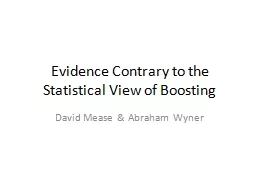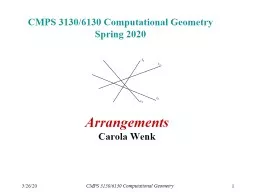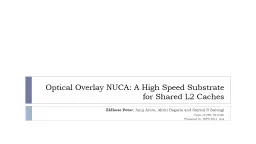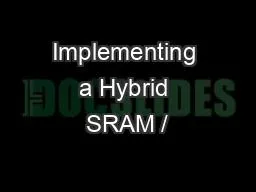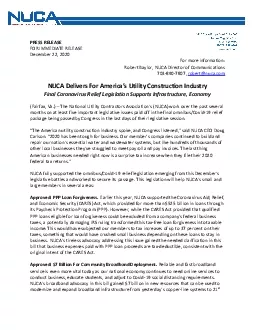PPT-HK-NUCA: Boosting Data Searches in Dynamic NUCA for CMPs
Author : relylancome | Published Date : 2020-10-06
Javier Lira ψ Carlos Molina ф Antonio González ψλ λ Intel Barcelona Research Center Intel Labs UPC Barcelona Spain antoniogonzalezintelcom ф Dept Enginyeria
Presentation Embed Code
Download Presentation
Download Presentation The PPT/PDF document "HK-NUCA: Boosting Data Searches in Dynam..." is the property of its rightful owner. Permission is granted to download and print the materials on this website for personal, non-commercial use only, and to display it on your personal computer provided you do not modify the materials and that you retain all copyright notices contained in the materials. By downloading content from our website, you accept the terms of this agreement.
HK-NUCA: Boosting Data Searches in Dynamic NUCA for CMPs: Transcript
Download Rules Of Document
"HK-NUCA: Boosting Data Searches in Dynamic NUCA for CMPs"The content belongs to its owner. You may download and print it for personal use, without modification, and keep all copyright notices. By downloading, you agree to these terms.
Related Documents








